Refer to the exhibit.

A customer has deployed a FortiGate 200F high-availability (HA) cluster that contains & TPM chip. The exhibit shows output from the FortiGate CLI session where the administrator enabled TPM.
Following these actions, the administrator immediately notices that both FortiGate high availability (HA) status and FortiManager status for the FortiGate are negatively impacted.
What are the two reasons for this behavior? (Choose two.)
Refer to the exhibits.
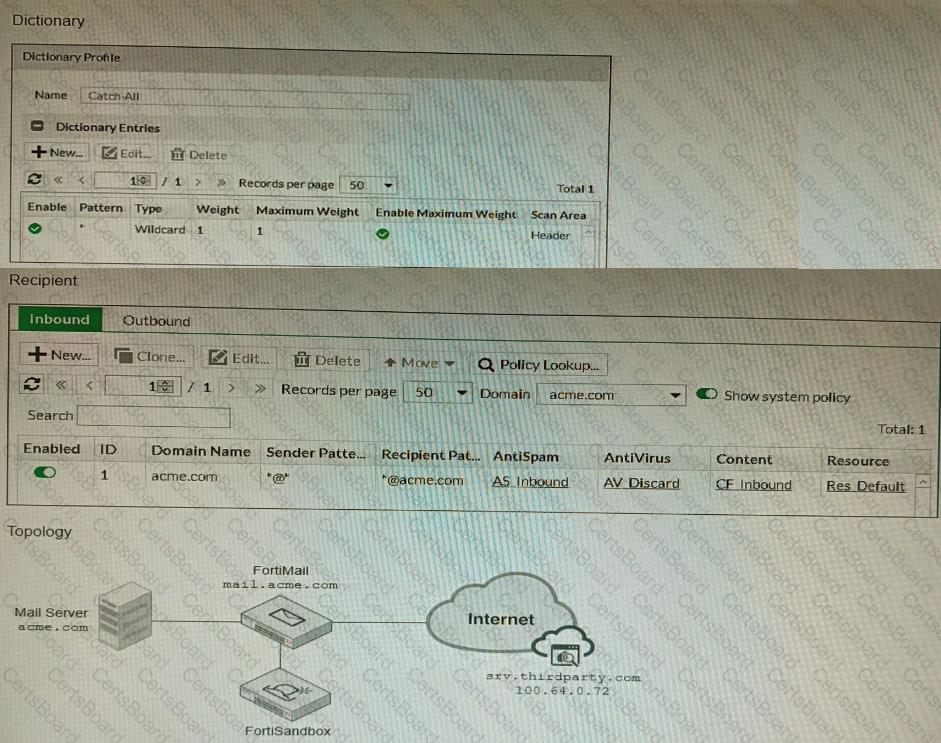
The exhibits show a FortiMail network topology, Inbound configuration settings, and a Dictionary Profile.
You are required to integrate a third-party's host service (srv.thirdparty.com) into the e-mail processing path.
All inbound e-mails must be processed by FortiMail antispam and antivirus with FortiSandbox integration. If the email is clean, FortiMail must forward it to the third-party service, which will send the email back to FortiMail for final delivery, FortiMail must not scan the e-mail again.
Which three configuration tasks must be performed to meet these requirements? (Choose three.)
A customer's cybersecurity department needs to implement security for the traffic between two VPCs in AWS, but these belong to different departments within the company. The company uses a single region for all their VPCs.
Which two actions will achieve this requirement while keeping separate management of each department's VPC? (Choose two.)
A customer has FortiAP devices in three branch offices managed from a FortiGate in the HQ. Each FortiAP is connected to a dedicated management VLAN.
The customer wants the users connected to the FortiAP SSIDs to use the branch local internet connection, but each branch uses a different VLAN ID for the bridge. HQ users travel to different branches and connect to the same SSID.
Which configuration option will solve this requirement?
Refer to the exhibits.
Exhibit A
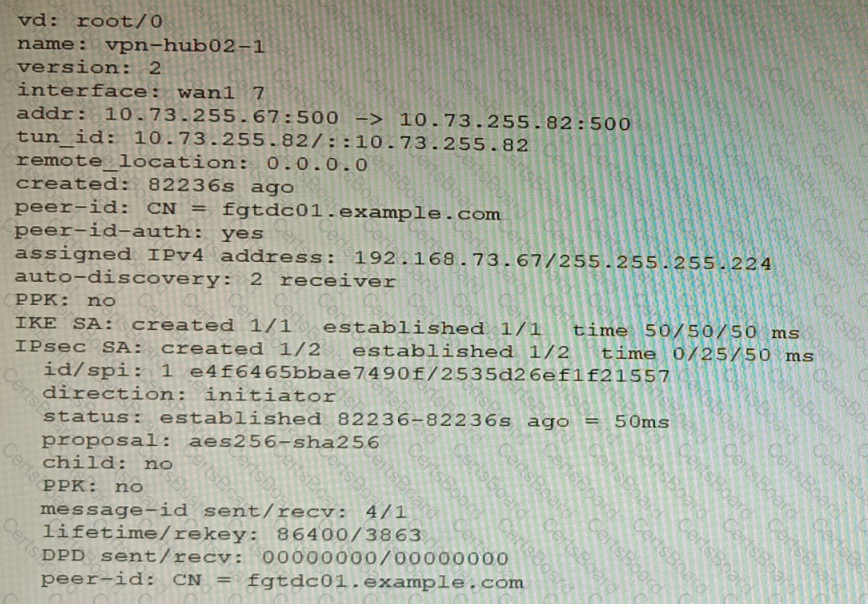
Exhibit B

Exhibit C
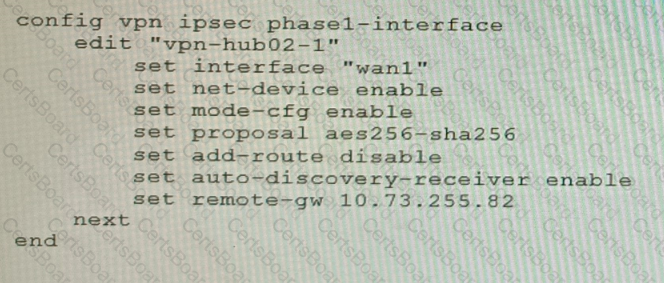
A customer is trying to set up a VPN with a FortiGate, but they do not have a backup of the configuration. Output during a troubleshooting session is shown in the exhibits A and B and a baseline VPN configuration is shown in Exhibit C Referring to the exhibits, which configuration will restore VPN connectivity?
A)
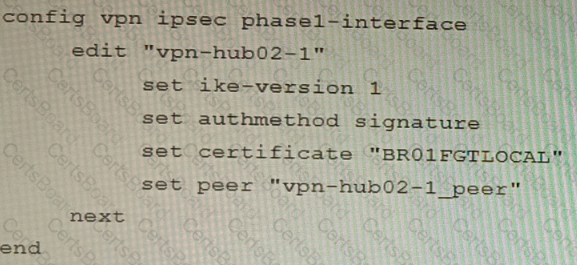
B)
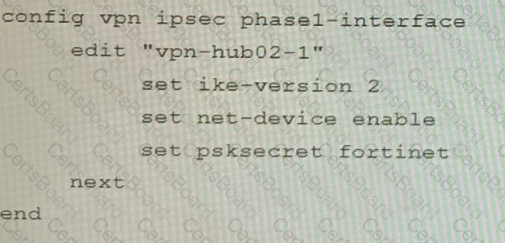
C)
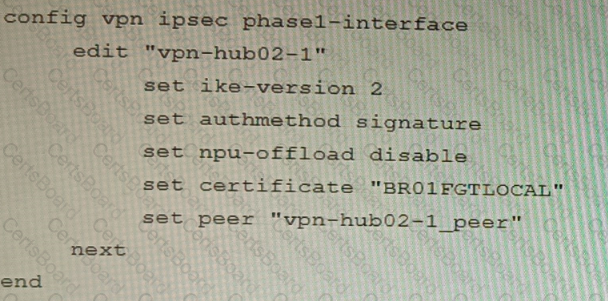
D)
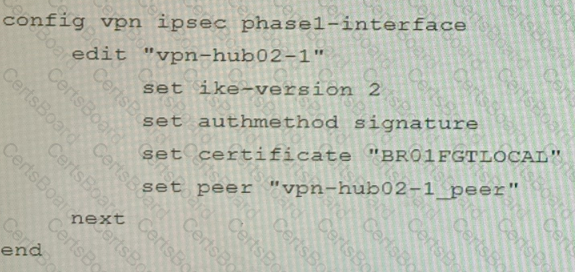
Refer to the exhibit, which shows a VPN topology.
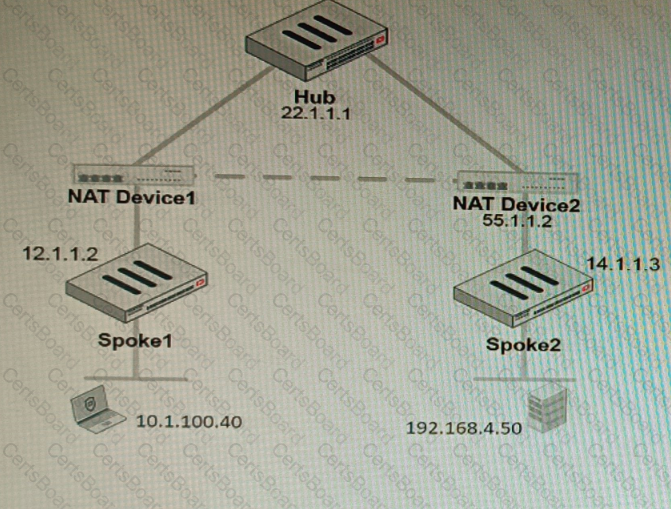
The device IP 10.1.100.40 downloads a file from the FTP server IP 192.168.4.50
Referring to the exhibit, what will be the traffic flow behavior if ADVPN is configured in this environment?
Refer to the exhibits.
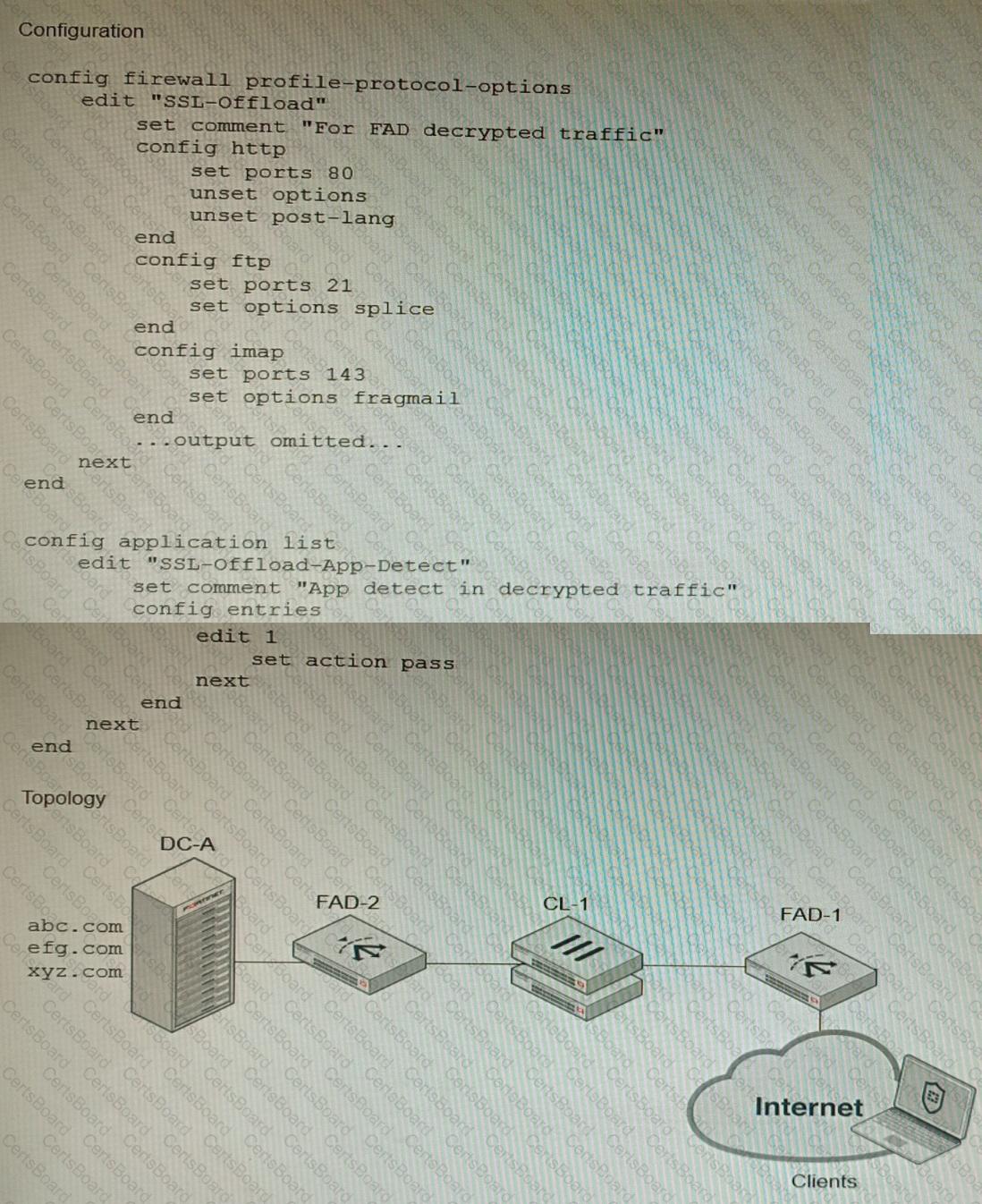
A FortiGate cluster (CL-1) protects a data center hosting multiple web applications. A pair of FortiADC devices are already configured for SSL decryption (FAD-1), and re-encryption (FAD-2). CL-1 must accept unencrypted traffic from FAD-1, perform application detection on the plain-text traffic, and forward the inspected traffic to FAD-2.
The SSL-Offload-App-Detect application list and SSL-Offload protocol options profile are applied to the firewall policy handling the web application traffic on CL-1.
Given this scenario, which two configuration tasks must the administrator perform on CL-1? (Choose two.)
A)
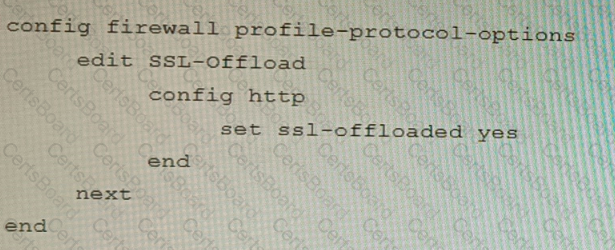
B)
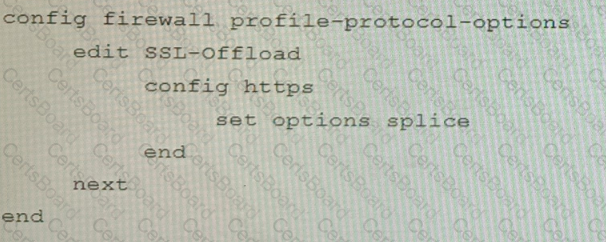
C)

D)

An administrator has configured a FortiGate device to authenticate SSL VPN users using digital certificates. A FortiAuthenticator is the certificate authority (CA) and the Online Certificate Status Protocol (OCSP) server.
Part of the FortiGate configuration is shown below:
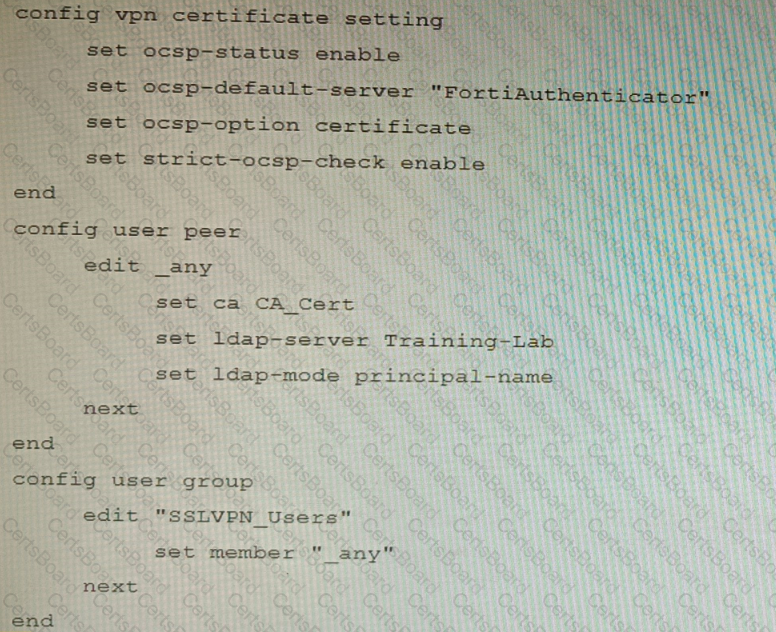
Based on this configuration, which two statements are true? (Choose two.)
Refer to the CLI configuration of an SSL inspection profile from a FortiGate device configured to protect a web server:
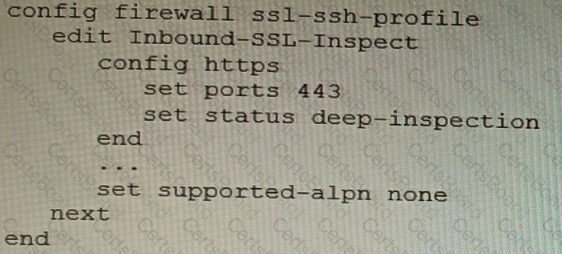
Based on the information shown, what is the expected behavior when an HTTP/2 request comes in?
You are designing a setup where the FortiGate device is connected to two upstream ISPs using BGP. Part of the requirement is that you must be able to refresh the route advertisements manually without disconnecting the BGP neighborships.
Which feature must you enable on the BGP neighbors to accomplish this goal?


